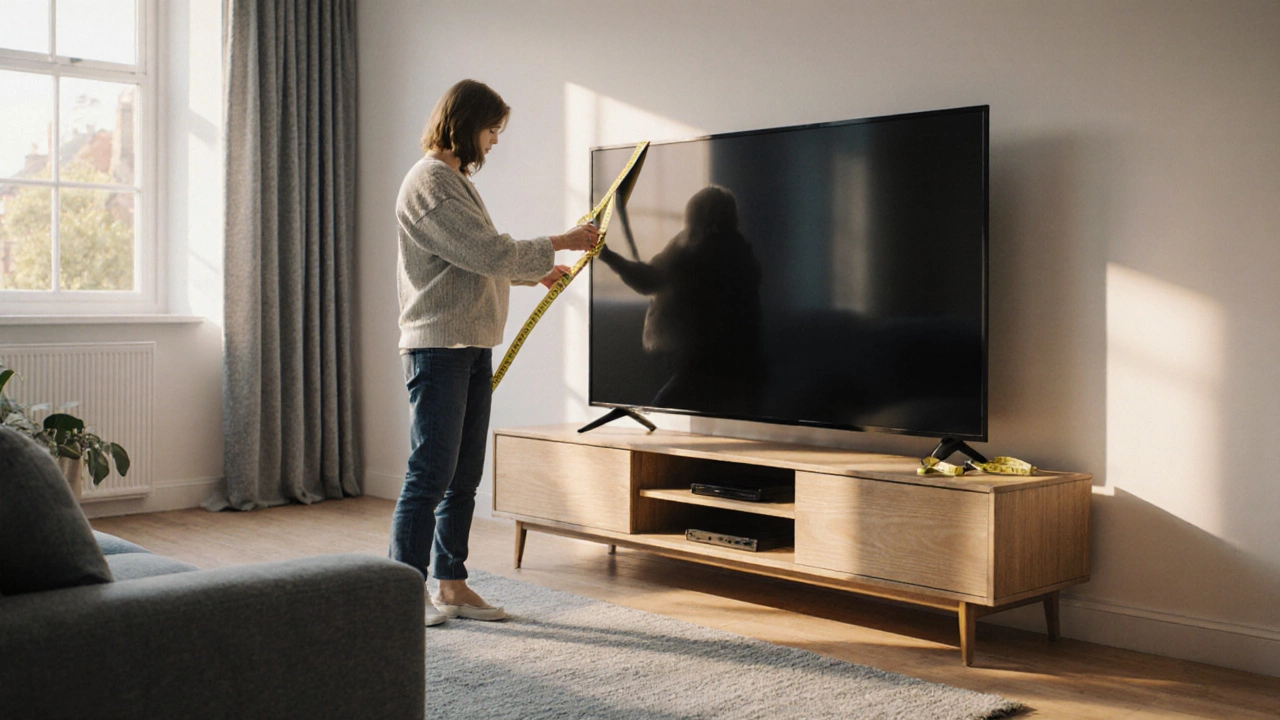TV Stand Dimensions: What You Need to Know
When planning a media area, understanding TV stand dimensions, the measurement specifications that define a stand's width, depth, and height. Also known as TV console size, it determines how well your TV fits, how much storage you get, and how the whole setup looks in your room.
One of the first choices is the TV height, the vertical position of the screen when seated. Proper height reduces neck strain and aligns the screen with your eye line. The TV stand width, the horizontal distance across the top of the stand should be at least as wide as the TV bezel, often 10‑20% wider for balance. Meanwhile, viewing ergonomics, the study of comfortable sightlines and posture ties height and distance together, ensuring a relaxed viewing experience. Finally, overall furniture dimensions, the size relationships between the TV stand and surrounding pieces affect room flow and aesthetics. In short, choosing the right dimensions is a mix of math, comfort, and style.
How to Choose the Right Size
Start by measuring your TV’s screen width and adding a few inches on each side – that gives you a safe target for the stand’s width. Next, think about depth: a depth of 15‑20 cm accommodates most media players and cable boxes while keeping the screen close enough for a clean look. For height, use a simple rule – the center of the screen should sit about 42‑45 inches from the floor for an average seated eye level. Plug those numbers into a quick spreadsheet or use a free online calculator, and you’ll see how different stands stack up. If you have a large living room, a wider stand can act as a focal point; in a cozy cabin, a compact model keeps the space from feeling cramped. Remember to leave at least 5‑10 cm of clearance behind the stand for ventilation and cable routing.
Once you’ve nailed the basic numbers, check how the stand fits with your existing furniture. Does the height match your sofa’s back height? Will the width align with side tables or windows? Aligning these elements improves visual harmony and prevents the stand from looking like an afterthought. Also, consider the material – solid wood adds weight and stability, while engineered boards keep the stand light and easier to move. By balancing width, depth, height, and material, you create a set‑up that feels intentional and works for everyday life. Below you’ll find articles that dive deeper into each of these topics, from exact height calculations to styling tips for different room sizes.
TV Stand Size Guide for a 65‑Inch TV
Learn how to pick the perfect TV stand for a 65‑inch TV. Get exact width, depth, height, weight limits and feature tips for a safe, balanced setup.
More
